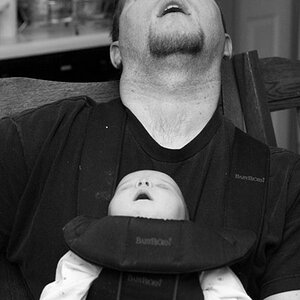Dionysus
TPF Noob!
- Joined
- Sep 23, 2008
- Messages
- 454
- Reaction score
- 2
- Location
- Newfield, NY
- Can others edit my Photos
- Photos OK to edit
pardon the question, but I AM a newbie, but I am going off of the book "understanding exposure". It says for scenes w/ lots of greenery , that i should meter off a big block of green, then recompose and take the shot w/ the exposure settings gained from metering off the green. The problem is when i did that (ad nauseum today) the pic would come out really dark, and underexposed.
Understanding exposure also said that when there is a big blue sky out to meter off of the sky, recompose and take the shot based on the exposure settings gained from metering off the sky. The same thing happens to me doing that as w/ the green. The sky will come outfine, but the rest of the shot will come out underexposed.
am i doing something wrong?
Understanding exposure also said that when there is a big blue sky out to meter off of the sky, recompose and take the shot based on the exposure settings gained from metering off the sky. The same thing happens to me doing that as w/ the green. The sky will come outfine, but the rest of the shot will come out underexposed.
am i doing something wrong?


![[No title]](/data/xfmg/thumbnail/34/34139-e52deba745f42ba091907fcc460cd6db.jpg?1619736311)
![[No title]](/data/xfmg/thumbnail/37/37628-b854997825aadb4eedaa3247baf8069f.jpg?1619738155)


![[No title]](/data/xfmg/thumbnail/36/36302-6ee4929dfdf80290ffd73704693e860f.jpg?1619737496)

![[No title]](/data/xfmg/thumbnail/39/39448-28e9a5e96080f7edcaf8e4226d8a0a6c.jpg?1619739036)

![[No title]](/data/xfmg/thumbnail/34/34138-0ecadfd41de9ae178e53528e0eb1a32c.jpg?1619736310)

![[No title]](/data/xfmg/thumbnail/31/31757-4f5257d19be4e34c6bdcbd2519380d53.jpg?1619734994)
![[No title]](/data/xfmg/thumbnail/35/35212-039632ef3763350189fc49390cb7eadf.jpg?1619736950)